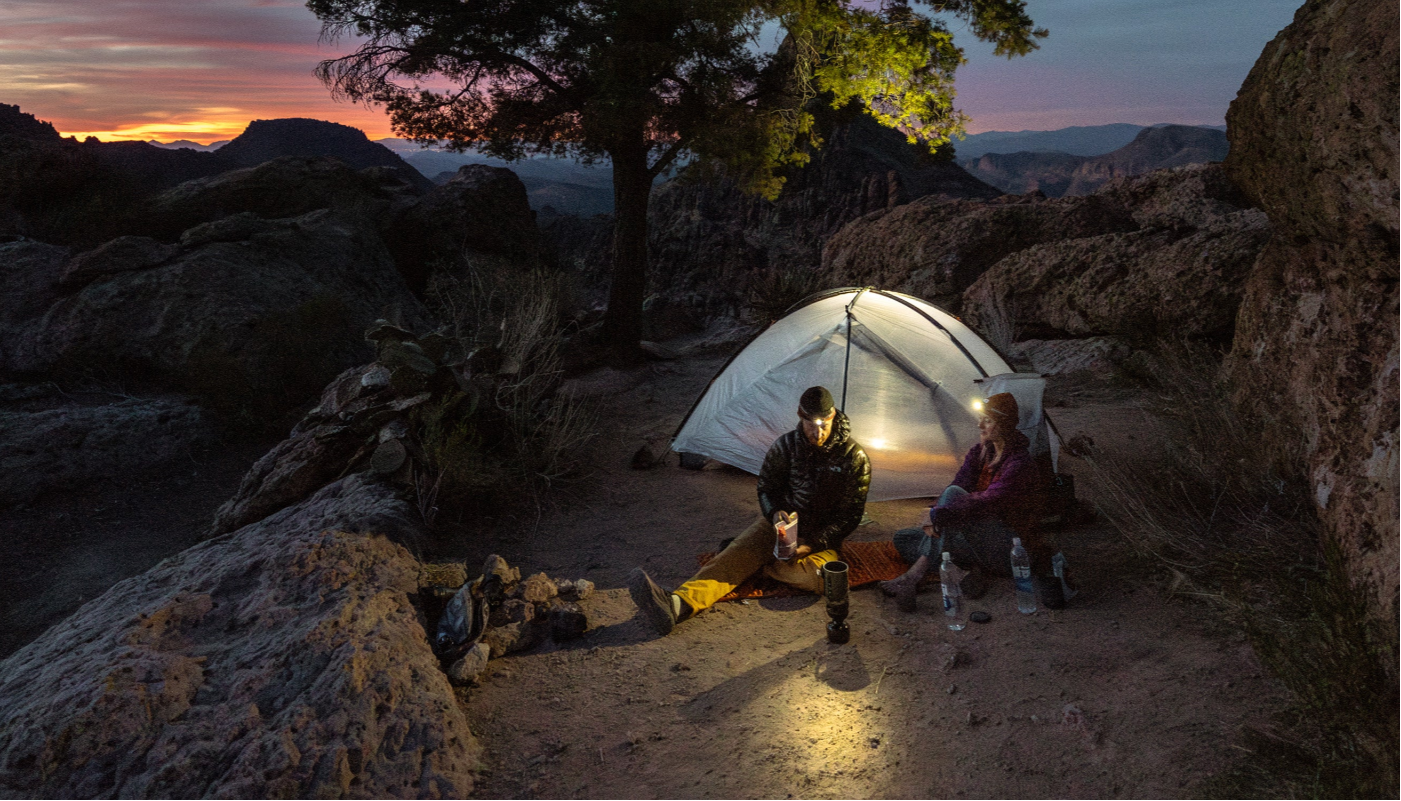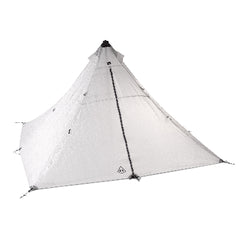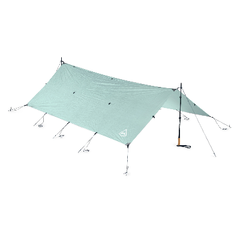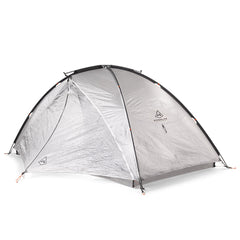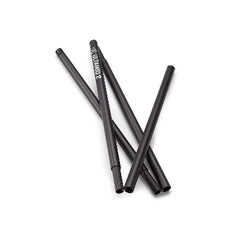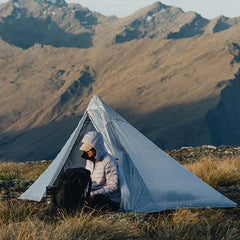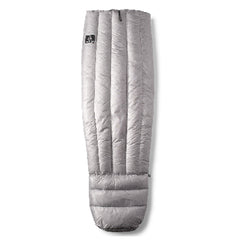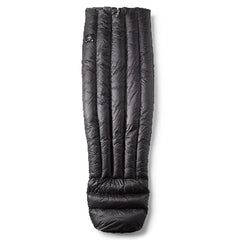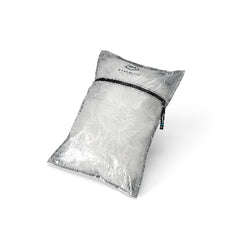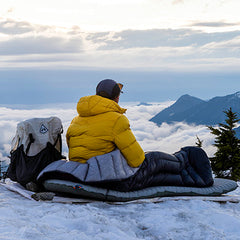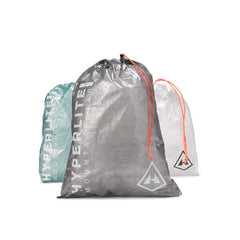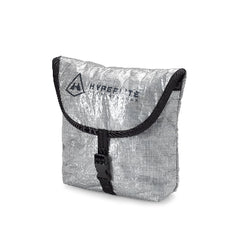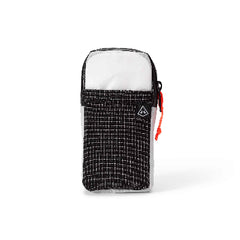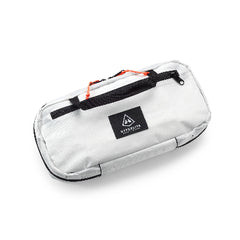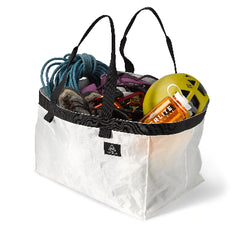Words and Photos by Izzy Tonneson @izzytonneson
Conventional wisdom says that “the best way to train for a thru hike is to thru hike.” But for many of us, getting time off work for several uninterrupted months is a feat unto itself. The reality of training for a thru hike is that work and home obligations limit how much time we can actually spend in the backcountry beforehand.

In the wilderness medicine world there’s a phrase, “Ideal to real.” It refers to the shift from performing medical care in the controlled, well-stocked environment of a hospital to responding in unpredictable, resource-limited wilderness settings. You have to adapt. I think about thru hike training the same way. Ideally, I’d slowly build up mileage with long trips and plenty of recovery. Really, I’m juggling working a fulltime job, backpacking on weekends, and squeezing in strength and cross training during the week.
I’ve got a bit of a Hannah Montana / Miley Cyrus “Best of Both Worlds” situation going on– except, it’s a lot less glamorous. Think unshowered hiker trash eating rehydrated refried beans one day and then showing up to my front-facing service industry job in a collared shirt the next. My “weekends” fall on Tuesday and Wednesday, which means Monday morning is all about getting ready. I fill my bear can with two days of food, top off my water bottles, and pack the car. By evening, I drive out to the Eastern Sierra, sleep in my car on BLM land for the night and hit the trailhead Tuesday Morning.
From there, it’s a two-day backpacking trip, always at high elevation, shooting for 20-25 miles per day. Thru hiking entails being on your feet and moving for over 12 hours, so I have been trying to build longer days into my training regimen for that reason. My weekend trips are solo which means I have to handle the logistics of driving myself in and out. Either I make my route a loop that starts and ends in the same place, or I take the gamble that if I finish somewhere different, I can get a hitch. My adventures push me to work my way through small sections of the High Sierra on the Pacific Crest Trail. So far, I have pieced together miles from Mammoth Lakes to Kennedy Meadows North in fragments, since my short trips pull in a lot of side trails.
 I have my return to work routine dialed: a $2 hot shower at the local lap pool, then straight to work. My clean clothes stay sealed in a two-gallon Ziploc so the stinky backpacking gear “funk” does not contaminate them, and I’m clocked in by 2pm. Unpacking waits until Thursday night, after my shift ends around 9:30. It’s not a convenient transition from work to the backcountry and back again. But then again, I wouldn’t exactly call walking across the country three times in a year convenient either. In the words of Miss Hannah Montana, “Livin’ two lives is a little weird.”
I have my return to work routine dialed: a $2 hot shower at the local lap pool, then straight to work. My clean clothes stay sealed in a two-gallon Ziploc so the stinky backpacking gear “funk” does not contaminate them, and I’m clocked in by 2pm. Unpacking waits until Thursday night, after my shift ends around 9:30. It’s not a convenient transition from work to the backcountry and back again. But then again, I wouldn’t exactly call walking across the country three times in a year convenient either. In the words of Miss Hannah Montana, “Livin’ two lives is a little weird.”
Of course, this begs the question. How do I get the most out of the other five days of the work week when I’m not on trail? A major training priority for me is injury prevention. There are two kinds of hiking injuries, overuse injuries, caused by repetitive strain or training too hard too fast, and acute injuries, which happen all at once like a sprained ankle or a bad fall. The second category is largely out of my hands (let’s hope that doesn’t happen), but overuse injuries are a variable I can train to prevent.
 Strength training is key. It’s a 40 minute drive one-way to the nearest gym, so again, being realistic, I’ve had to get creative by doing my workouts at home or on the go. I can accomplish a lot with just a yoga mat, a kettle bell, and resistance bands. If you’ve seen a total loony in the Tuolumne Wilderness Center parking lot doing walking lunges between rows of sprinter vans and built out Tacomas, that’s probably me.
Strength training is key. It’s a 40 minute drive one-way to the nearest gym, so again, being realistic, I’ve had to get creative by doing my workouts at home or on the go. I can accomplish a lot with just a yoga mat, a kettle bell, and resistance bands. If you’ve seen a total loony in the Tuolumne Wilderness Center parking lot doing walking lunges between rows of sprinter vans and built out Tacomas, that’s probably me.
I’ve substituted the StairMaster, the fan favorite torture device for thru hike training, for what I call “Mt. Dana reps.” Mt. Dana sits in Yosemite National Park, with the trailhead already near 10,000 feet. The hike stacks on another 3,000 feet of vert packed into just 2.5 miles. I load a few extra pounds into my backpack for good measure and then grind out a few laps. Summit, back down, summit again, back down again. By the end of the third lap, I’m tomato-faced and reevaluating my life choices, but that’s the point. I’ll take Mt. Dana over the fluorescent lights of a real gym any day.
My unconventional training regimen is the price I’m willing to pay for the privilege of calling Yosemite my backyard. For those of us chasing long trails, the best training plan is always the one you can actually follow and fits into your life.

